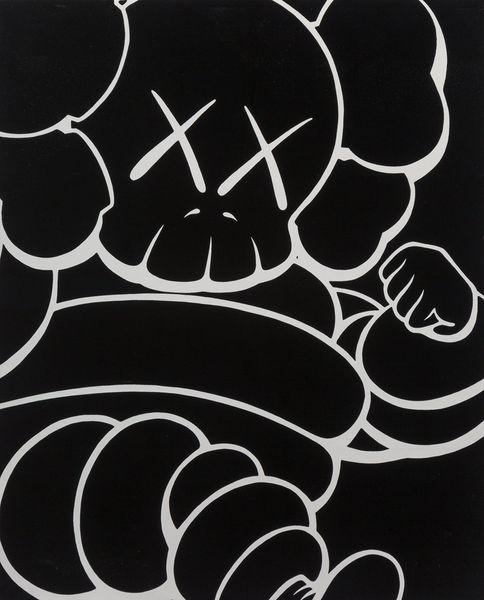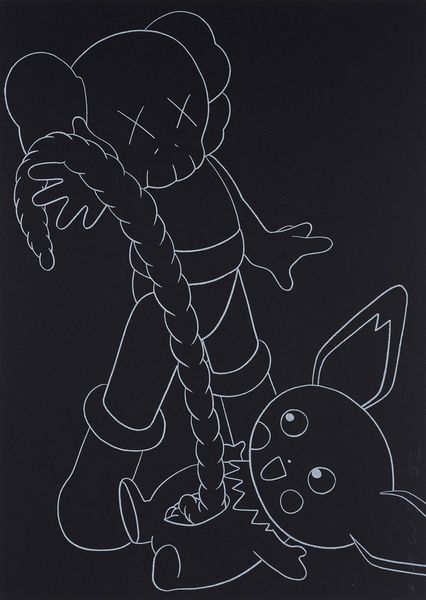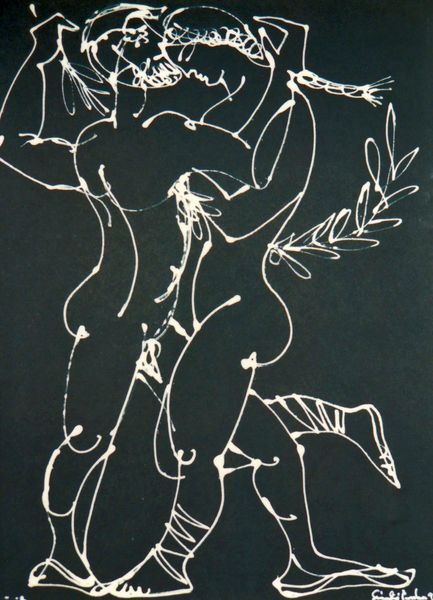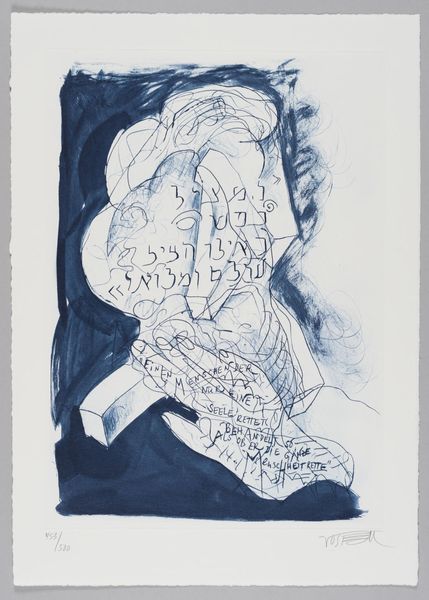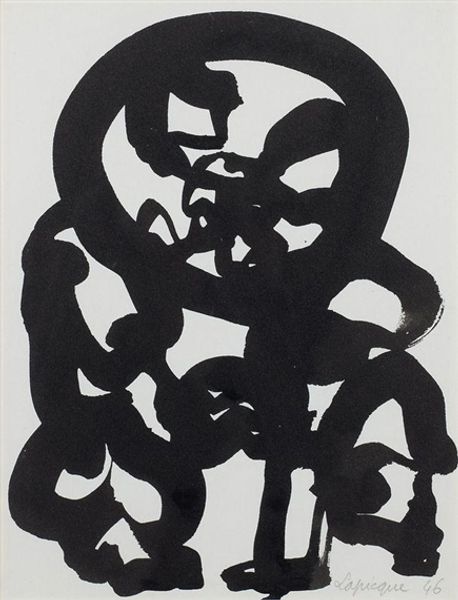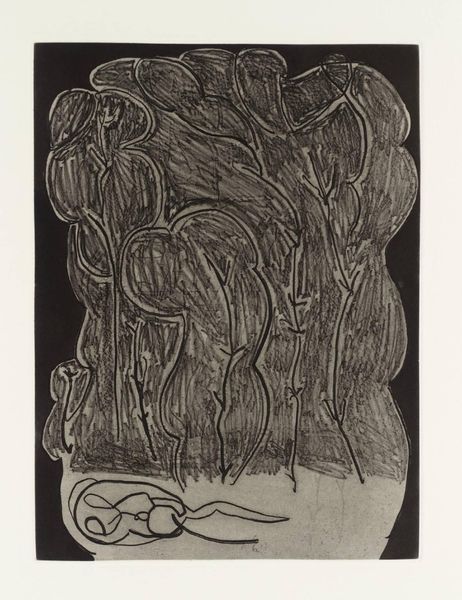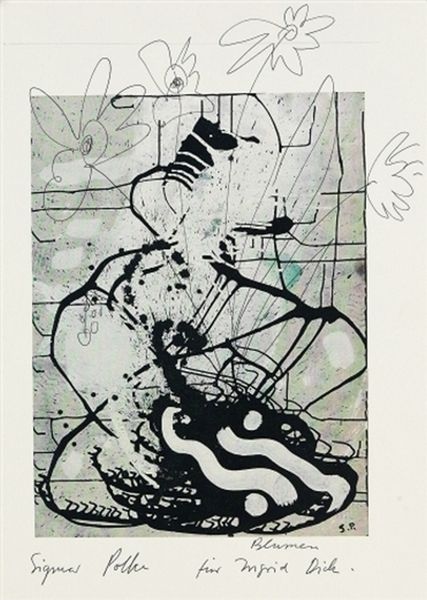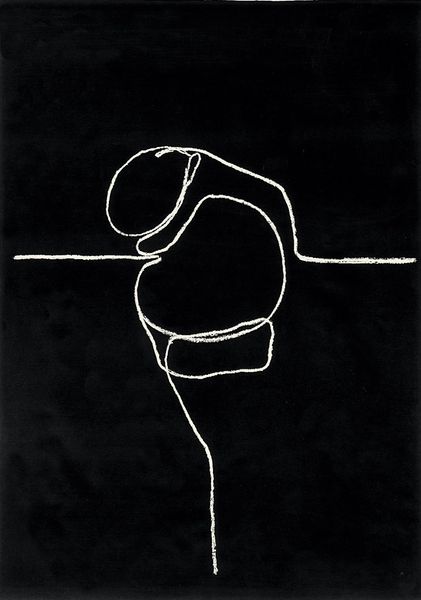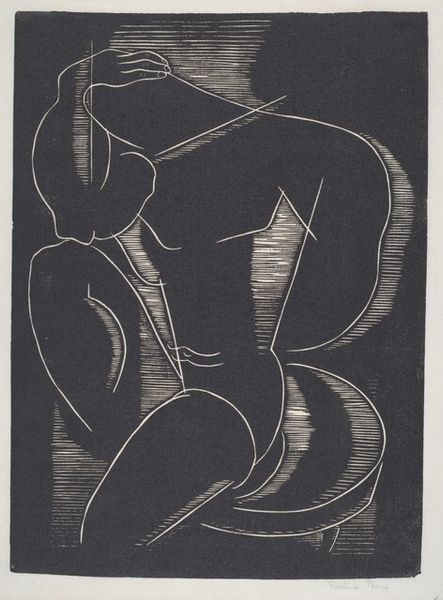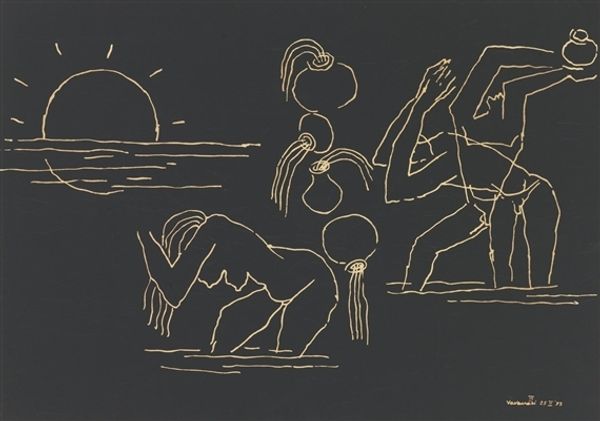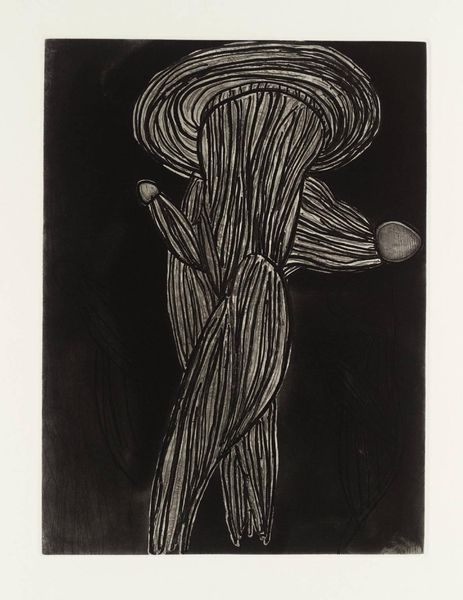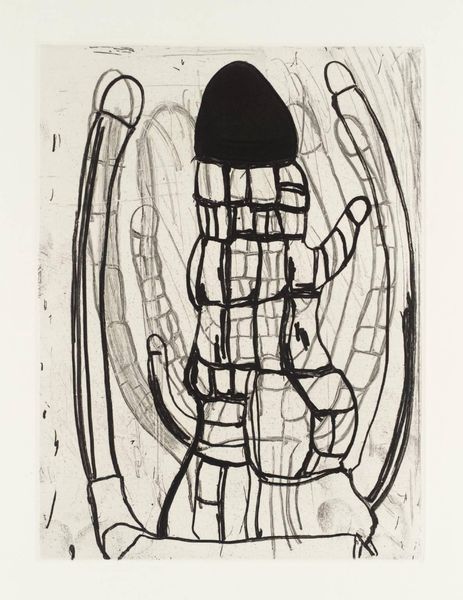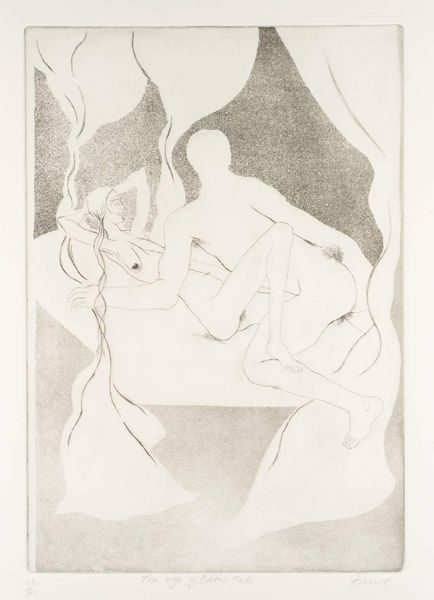
Copyright: Modern Artists: Artvee
Curator: Here we have KAWS' "Chum vs. Astroboy," a print from 2002. The artist employs stark lines to depict two recognizable figures in a compelling confrontation. Editor: It's striking! The simplicity of the graphic style is quite deceptive, drawing you in with an almost unsettling sparseness, highlighting a power dynamic immediately. Curator: Exactly. KAWS, known for appropriating and recontextualizing pop culture icons, places his "Chum" character, an altered version of the Michelin Man, in a dominant position over Astroboy, the beloved Japanese manga character. The image itself is a print, pointing to ideas around reproduction, mass culture, and artistic labor. Editor: It’s fascinating how KAWS leverages these familiar figures. We’re looking at symbols loaded with histories of consumerism, Japanese manga, and American animation... all filtered through his recognizable aesthetic. Where does the appeal lie, then, for the masses encountering this piece? Curator: Well, consider the materials themselves. The flatness of the print, devoid of texture, removes any trace of the artist’s hand. This emphasis on the image rather than the making challenges traditional notions of authorship and artistic skill. Appropriation is a huge thing that can change the whole message that is sent with a work, it is essential to question that. Editor: Right, that’s a significant observation. The artwork encourages audiences to question ownership and re-interpretations of meaning within broader culture and popular consumerism. Curator: Precisely. And it's worth asking what these juxtapositions say about us: are we consumers consuming symbols or symbols influencing consumers? KAWS's intervention is about taking pre-existing and well-loved characters to challenge the ideas that they represent. Editor: And this particular matchup, Chum over Astroboy, speaks to a cultural collision of sorts...an almost aggressive critique played out with these familiar forms that were originally meant for delight and escapism. A stark image for considering the evolution of symbols, power, and popular acceptance, I find. Curator: Indeed. It leaves one pondering the larger framework within which art, commerce, and identity interact. Editor: It certainly does! A conversation starter through visual means, I’d say.
Comments
No comments
Be the first to comment and join the conversation on the ultimate creative platform.
